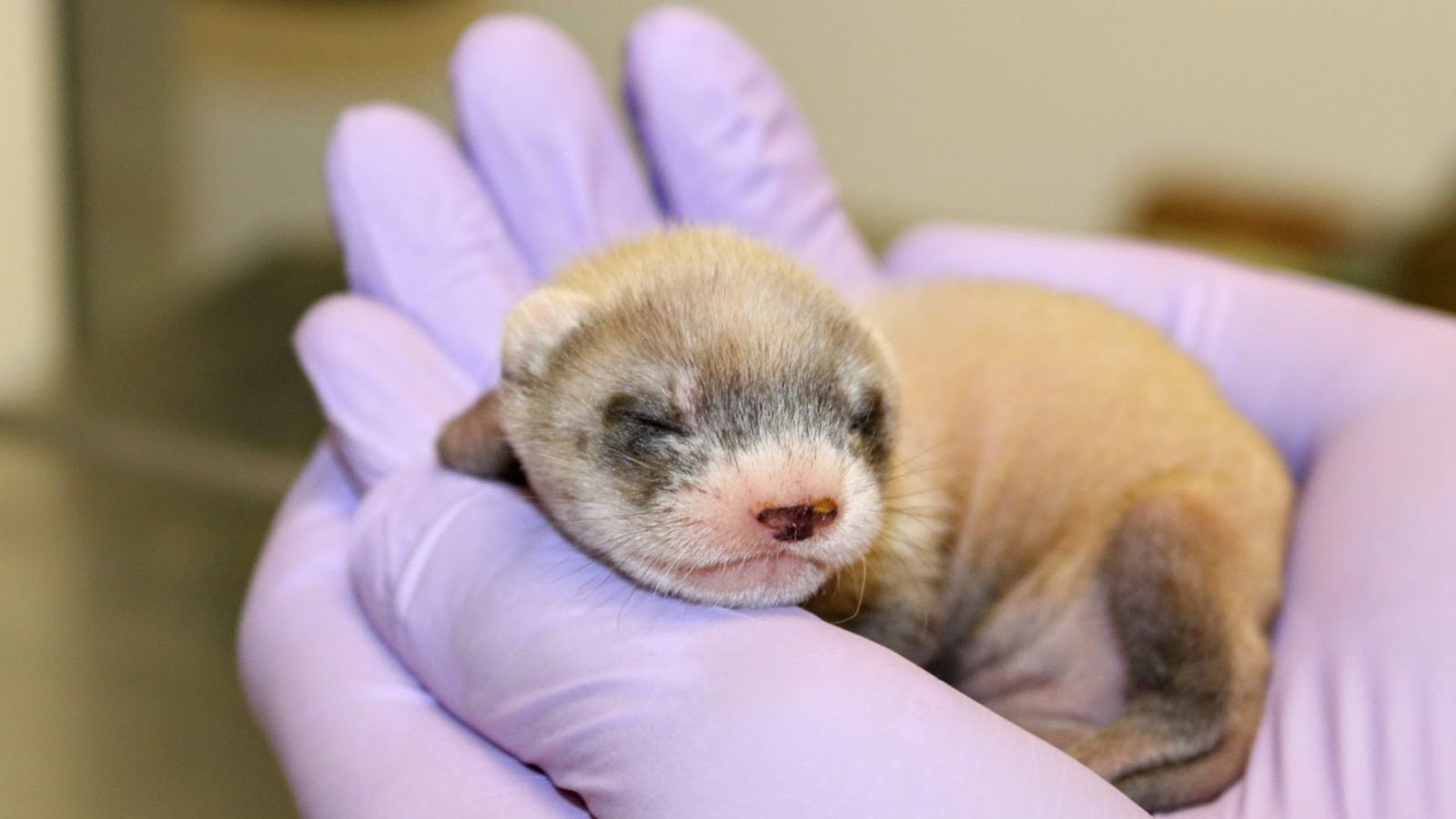By Wendy Corr, Cowboy State Daily
wendy@cowboystatedaily.com
Cryogenics and cloning may be the future for endangered species like the black-footed ferret, a critter once thought extinct until it was rediscovered in Wyoming more than 40 years ago.
Scientists were thrilled in 1981 to discover a small den of black-footed ferrets on a ranch near Meeteetse. The species had been thought extinct until a dog named Shep brought one home to his owners on the Hogg Ranch.
Since then, enormous efforts have been made to repopulate the species, and now a company that specializes in groundbreaking technology – specifically cryogenics and cloning – is helping to ensure the animals’ future.
“We’re trying to stop more species from crossing that line into extinction,” said Ryan Phelan, co-founder and executive director of Revive & Restore, a nonprofit agency that has done extensive work with cryogenically preserved genetic material from species on the verge of disappearing.
“We’ve been working on all different types of species from coral to black-footed ferrets to the woolly mammoth,” she said.
‘Nobody Said Anything About Barking Ferrets’
Retired Wyoming Game and Fish biologist Denny Hammer was the first to lay eyes on the presumed-extinct ferrets in 1981 while on an expedition to ensure no endangered species were on land that could be leased for mineral extraction.
“I was on the right side of the vehicle,” he recalled. “Steve Martin was my partner. And all of a sudden with my spotlight, I saw the eye shine that I’ve been trained for four years to look for – really a turquoise, bright green eye shine that you just don’t see in any other animal out there.”
Hammer said when he and Martin realized what they had actually seen, they jumped out of their vehicle and ran to where they had watched the animal disappear.
“So I walked over to the hole and I looked down and just about the time I looked down the ferret came back up and he barked,” Hammer said. “Nobody said anything about barking ferrets!”
Hammer said the moment was one he’ll never forget.
“We both looked at each other and we just started to dance. It was just a fantastic moment,” he said. “It was the start of everything to come – good and bad.”
Hammer said that when they were able to capture the first of what would be 18 ferrets from the Hogg Ranch, he realized that he was holding history – the first black-footed ferret to be seen, let alone handled, in more than 10 years.
“To be the first to be there, to know that we had in our hands – the only live black-footed ferret in the world – at that time was pretty amazing,” said Hammer.
A Fragile Population
At a symposium this week at the Buffalo Bill Center of the West in Cody, scientists and wildlife experts converged to discuss the future of black-footed ferrets. Curator Corey Anco with the Draper Museum of Natural History said the symposium brings the story full-circle.
“All black-footed ferrets on the landscape today are descended from that population from Meeteetse,” said Anko. “And this is a really exciting event because for the first time in history, scientists have cloned a black-footed ferret that may reintroduce a whole bunch of genetic diversity that is currently absent in the existing population.”
Even though a captive breeding program was successful, the animals’ existence has faced challenges. From their reintroduction into the wild in 1986, the population has grown from those first 18 to several hundred in eight Western states, Mexico and Canada.
But a disease that affects both ferrets and prairie dogs, the ferrets’ primary food source, has impacted the endangered species. Sylvatic plague, a bacterial disease transmitted by fleas, is widespread throughout the Western states and has kept the black-footed ferret population from growing.
That’s where genetic diversity through cloning can make a difference, Phelan said.
“The most important part about genetic diversity is the more diverse it is as an individual, the better for the species,” she said. “It creates more ability to be resilient to disease like sylvatic plague. It increases the chances for fertility and just a healthier, more resilient organism.”
Going Back In Time
Phelan said she was approached by the U.S. Fish and Wildlife Division and asked if biotechnology could help create a more robust population of black-footed ferrets by bringing back lost genetic variations.
“We went back in time 40 years by using frozen cell lines,” Phelan said. “By looking at the genomic sequence of the black-footed ferrets that had been cryo-preserved, we could identify that they had three times more genetic variation than any living ferret today.”
Phelan said scientists used the eggs of a donated domestic ferret, removed the nucleus from the domestic ferret egg and inserted the genome of the black-footed ferret.
“Through the cloning process, the embryo develops, using all the genome of the black-footed ferret,” Phelan explained.
The first cloned endangered black-footed ferret named Elizabeth Ann was born in December 2020.
“As we continue to breed and develop this line of ferrets, we’re able to introduce that new genetic variation,” Phelan said.
Nearly 10,000 black-footed ferrets have been born both in captivity and in the wild since the species was re-discovered in 1981. And in part thanks to this groundbreaking research, more generations can follow.





